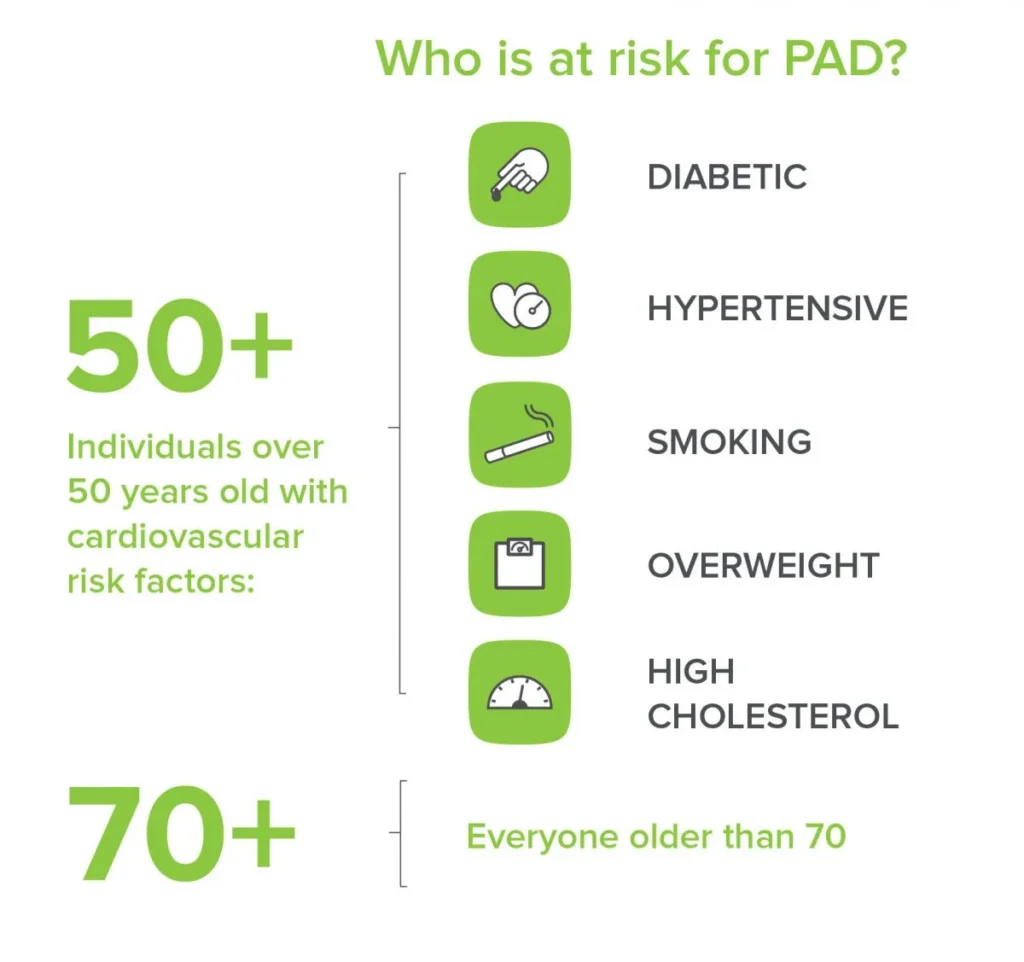PAD Awareness


What is Peripheral Arterial Disease (PAD)?
Peripheral Arterial Disease (PAD) is a common but often underdiagnosed circulatory condition where narrowed arteries restrict blood flow to the limbs, particularly the legs. With PAD, the extremities don’t receive sufficient blood flow to meet their needs, causing symptoms like pain, cramping, or fatigue, especially during physical activity.
PAD is a severe disease with similar morbidity and mortality rates to coronary artery disease. Yet, it remains under-screened, which limits early detection and intervention.
Who Should Be Screened for PAD?
As of 2015, the global prevalence of PAD was estimated at 237 million adults, a significant increase from 202 million in 2010, and the numbers are expected to continue rising. Individuals at higher risk for PAD who should consider screening include:
- People over 50, especially if they have a history of smoking or diabetes
- Individuals with high blood pressure, high cholesterol, or a family history of vascular disease
- Those who experience symptoms like leg pain, cramping, or numbness during activity
Early screening for PAD can be crucial in managing the condition and preventing further complications, such as severe circulation problems or increased risk of heart attack and stroke.

How is Peripheral Arterial Disease (PAD) Screened?
One of the most common and effective ways to screen for Peripheral Arterial Disease (PAD) is through an Ankle-Brachial Index (ABI) test. This quick, noninvasive procedure compares the blood pressure measured at the ankle with the blood pressure in the arm. A low ABI result indicates potential narrowing or blockage in the leg arteries, a clear sign of PAD.
The ABI test is crucial for individuals at risk of cardiovascular disease, which accounts for 35% of global deaths. PAD is often asymptomatic, with 70% of patients experiencing no symptoms. Furthermore, about one-third of asymptomatic patients have masked Lower Extremity Arterial Disease (LEAD), making screening essential for early detection and prevention.
Why is Screening for PAD Important?
Screening for PAD is critical before beginning any compression therapy. Compression can be unsafe for patients with low ABI scores because it may restrict already limited blood flow in the legs. According to international guidelines:
- Compression is not recommended for patients with an ABI of less than 0.8.
- ABI should ideally be above 1.0 before using compression therapy safely.
By ensuring the safety and appropriateness of compression therapy through ABI testing, clinicians can prevent complications and improve the outcomes for individuals managing PAD or at risk of vascular disease.
